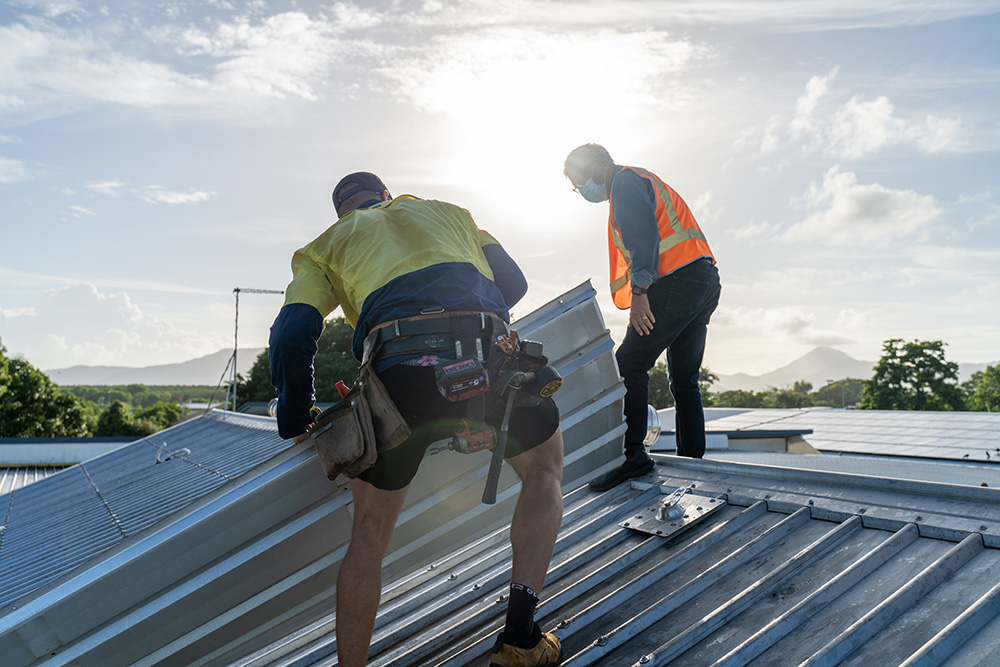Natural disasters such as cyclones can cause immense destruction to buildings and homes, resulting in loss of life and property. Cyclones are powerful storms that can unleash winds of up to 250 km/h, torrential rain, and even storm surges. In regions prone to cyclones, it is essential to build structures that can withstand the fury of nature. Cyclone-rated construction is the process of building structures that can withstand extreme weather conditions and minimise the impact of the storm. In this article, we will discuss the importance of cyclone-rated construction, the process involved, and the benefits it offers.
What is Cyclone Rated Construction?
Cyclone-rated construction is the process of building structures that can withstand the extreme weather conditions of cyclones. The process involves designing and constructing buildings to resist the high wind loads, debris impact, and rainwater penetration associated with cyclones. Cyclone-rated construction involves the use of specialised building materials and techniques that can withstand extreme weather conditions. The aim of cyclone-rated construction is to ensure that the structure remains intact and safe for its occupants during and after a cyclone.
The Importance of Cyclone-Rated Construction
Cyclone-rated construction is essential in regions that are prone to cyclones. Cyclones can cause severe damage to buildings, resulting in the loss of life and property. The high wind loads, debris impact, and rainwater penetration associated with cyclones can cause roofs to be blown off, walls to collapse, and windows to shatter. The destruction caused by a cyclone can take years to repair, and in some cases, the damage may be beyond repair. Cyclone-rated construction can minimise the impact of the storm, protect the occupants, and reduce the cost of repairs.
The Process of Cyclone-Rated Construction
Cyclone-rated construction involves a multi-step process that includes the following:
- Site Analysis: The first step in cyclone-rated construction is to conduct a site analysis to determine the risks associated with cyclones. The site analysis involves assessing the location, topography, and wind speed in the region.
- Design: The second step is to design the structure to resist the high wind loads, debris impact, and rainwater penetration associated with cyclones. The design process involves the use of specialised building materials and techniques.
- Materials Selection: The third step is to select the appropriate building materials. The materials used in cyclone-rated construction must be strong, durable, and able to withstand the extreme weather conditions of a cyclone.
- Construction: The fourth step is the construction phase. During this phase, specialised building techniques are used to ensure that the structure is built to resist the high wind loads, debris impact, and rainwater penetration associated with cyclones.
Benefits of Cyclone-Rated Construction
Cyclone-rated construction offers numerous benefits, some of which are listed below:
- Increased Safety: Cyclone-rated construction ensures the safety of the occupants during and after a cyclone. The structure remains intact and can withstand the high wind loads, debris impact, and rainwater penetration associated with cyclones.
- Cost Savings: Cyclone-rated construction can save costs in the long run. The structure remains intact, minimising the need for repairs or rebuilding after a cyclone.
- Peace of Mind: Cyclone-rated construction provides peace of mind for the occupants. They can be confident that their structure can withstand the fury of nature and protect them during a cyclone.
- Increased Property Value: Cyclone-rated construction can increase the property value of a structure. Cyclone-rated buildings are in high demand in regions prone to cyclones, and as such, they can fetch higher prices in the market.
- Compliance: Cyclone-rated construction may be a requirement in some regions prone to cyclones. By complying with these regulations, building owners can avoid penalties and fines.


